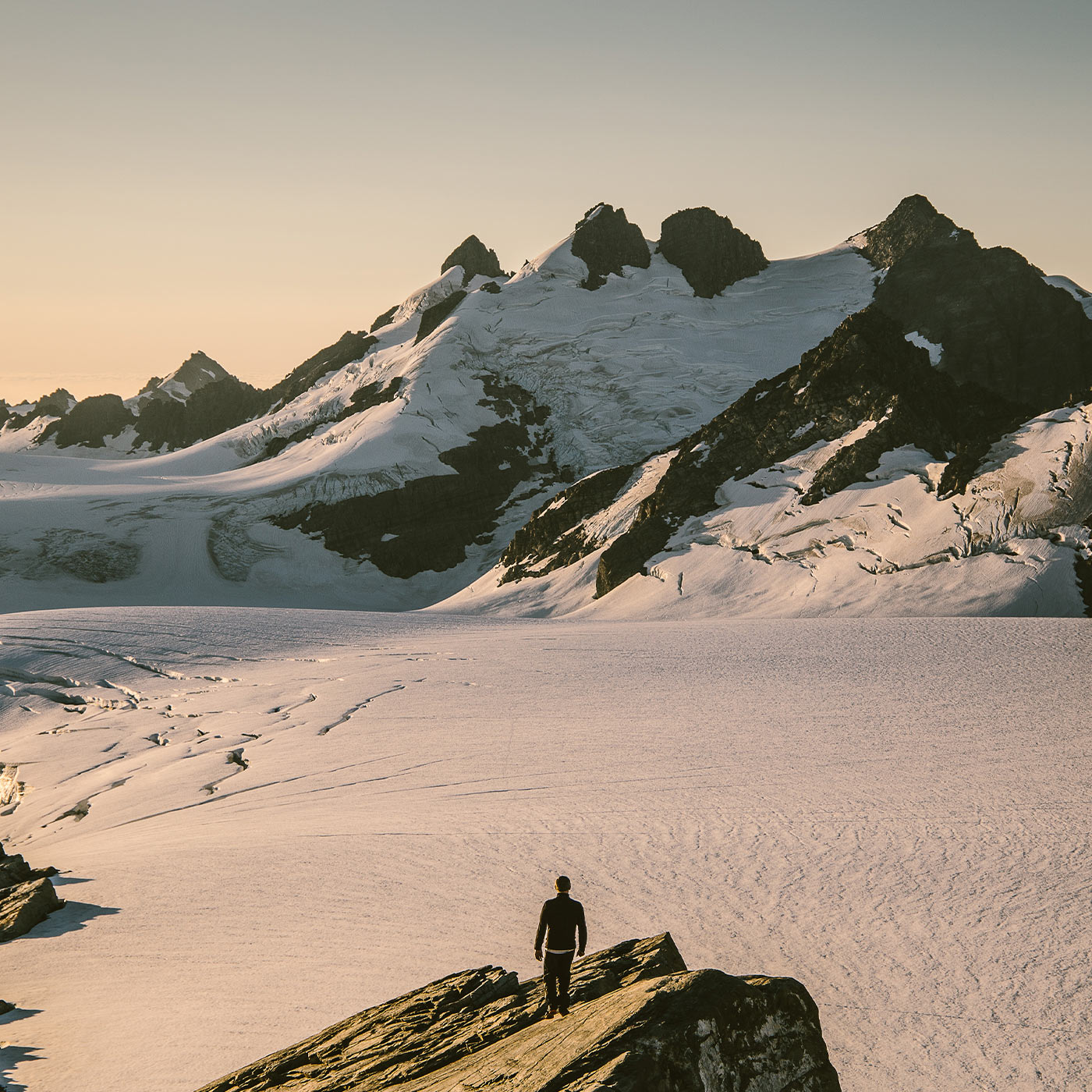Snow models water flows
With advances in state-of-the-art remote sensing technologies, this Deep South National Science Challenge project aims to provide policymakers with a more robust model of seasonal snow accumulation and the implications for catchment processes.
Associate Professor Nicolas Cullen's research subjects are a difficult lot: they retreat or disappear when you need them to stay put, they have major mood swings, and they hold dominion over us all.
Cullen (School of Geography) is in the tricky business of tracking and predicting the behaviour of snow and glaciers. Occupying that vital space between climate and hydrology, his latest project will centre around the modelling of seasonal snow and catchment processes for the Deep South National Science Challenge: Changing with our Climate.
The warming of our planet, and all the wonky-weather curveballs therein, greatly impacts the sustainability of our nation's water cycle. The mountains in the Southern Alps act like water towers that feed our major rivers, with snowmelt and loss of glacial ice providing vital buttressing for our largest hydro-electric power schemes and irrigation (especially during times of catastrophic drought).
Cullen explains our precarious hydrologic situation: “The mountain snowpack is a major source of fresh water, but we still struggle to reliably estimate the amount of snow stored in our high alpine regions, how much water can be expected downstream and when it will be released.”
Cullen has some bright news on this front, though. Otago's new Mountain Research Centre (MRC) has brought together research and technological expertise from the University's Schools of Geography and Surveying, and will provide an invaluable resource for the Deep South project.
“The mountain snowpack is a major source of fresh water, but we still struggle to reliably estimate the amount of snow stored in our high alpine regions, how much water can be expected downstream and when it will be released.”
This includes recent advances in remote sensing technologies that promise better assessment of the physical processes controlling the spatial variability of snow accumulation.
MRC member Dr Pascal Sirguey's expertise in high-resolution satellite photogrammetry – the extraction of 3D information from photographs – will be invaluable in supporting the research of Dr Todd Redpath, a postdoctoral fellow in the team. Redpath will be responsible for using state-of-the-art snow observations from a range of satellites to help reduce the uncertainty of modelling seasonal snow, using the New Zealand Water Model over the project's three-year term. In turn, more sophisticated modelling on the whereabouts and distribution of our alpine snow will be generated by colleagues at Victoria University.
By eliminating some of the uncertainty that has long thwarted the best predictive efforts of our hydrologists, our nation's policymakers will have a more robust path to proceed from.
Though scientific curiosity drives the team's project, Cullen stresses the importance of keeping the communities who depend on the snowmelt-to-streamflow at the forefront of the picture. “Understanding how water resources will change is an issue of national importance and cannot be achieved without the expertise and guidance of Māori and their communities.” The project team will engage with both local authorities and iwi to this end.
The team's research will sit within the framework of Ki uta ki tai, from the mountains to the sea (a kaitiakitanga-rich philosophy around environmental and resource management).
“Ki uta ki tai is used as a holistic approach to better understand the interconnected nature of water, land, coast, atmosphere, flora, fauna and people,” Cullen explains. “Part of our efforts will certainly be to find new pathways to explore the role seasonal snow plays in providing water to these interconnected systems. Getting the right answers for the right reasons is certainly the underlying theme of the work.”
Funding
Deep South National Science Challenge: Changing with our Climate
Associate Professor Nicolas Cullen.
Garden of Eden ice plateau.
The Brewster Glacier weather station.

